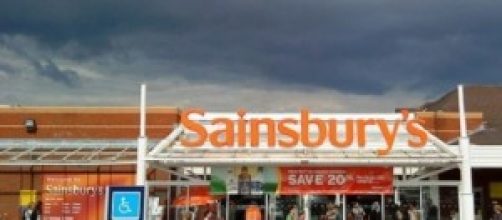Sainsbury's have released their Christmas advert in partnership with the Royal British Legion, with the central concept being that "Christmas is for sharing", a seemingly inoffensive message one might think without seeing the advert and considering how it has been received by the general public. After its first showing two days ago, hundreds of viewers felt obliged to complain about the advert's use of images from World War I with the purpose of promoting the supermarket chain's brand. Many have responded on social media both agreeing with the outrage and taking the opposite stance that it is a moving depiction of the events on Christmas Day, 1914 when British and German soldiers called a temporary truce and even played a football match in the no-man's land between their opposing trenches.
Central to the argument that Sainsbury's should avoid using such a theme seems to be that it is the act of a company pushing their brand at all costs, using whatever means it sees fit and showing scant respect for the memory of the soldiers who took part at that time (and presumably subsequently). Maybe that is slightly ingenuous to the company, and leans too far towards one interpretation of the motivations behind any form of advertising. Indeed many with relatives involved in the Armed Forces have responded by saying that it represents a fitting tribute and backs a worthy cause.
The essential aim of the advert seems to involve raising funds for the Royal British Legion, with all profits from the sale of a particular brand of chocolate bar going to that very worthy institution.
The 'sharing' notion is reflected as part of the storyline, as a British soldier passes over his chocolate bar to his German contemporary.
One could suggest that a very similar portrayal of the same scene was used for the video of the Paul McCartney song "Pipes of Peace" which reached number one in 1983 in the British charts. Presumably it was because he was an ex- Beatle and not a multimillion pound chain, that the imagery did not cause such unrest and disturbance at the time? At least the Sainsbury's attempt at recreating the scene (although admittedly fictional, essentially) was as true as it could be to historical data around such as the military insignias on uniforms and even the depth of the trenches at the time.
Of course, if it truly offends the Nation then the public could vote with their feet and avoid purchasing the product in question, but recent figures seem to suggest that is not currently the case with the chocolate bars selling at around 5,000 per hour from Sainsbury's outlets up and down the country. The Royal British Legion will be thankful for the extra funds, as echoed by Charles Byrne, Director of Fundraising for them, who has suggested that he sees it as an important campaign to support the future of the living and is proud of their twenty year alliance with the supermarket group.
Some may see it as Sainsbury's strategic counter to the annual advertising that John Lewis run at this time (noting that hardly any complaints have been received about their offering this year), utilising emotive images to grab the viewers attention and make them view the overall brand (including the other products their stores offer for sale) in a more favourable light.
The 'feel good' factor from the alliance and (hoped for) positive press can boost sales. John Lewis have seen a good reaction in terms of their Christmas sales in past years following the use of their adverts. Increasing sales is one of the key purposes of advertising and it seems likely that the advert could have an indirect effect to increase general interest in the overall brand and what it has to offer, even if the original 'focus' was only on the chocolate bar, which was the only product that they offer that appeared in the screening. The Sainsbury's brand image did appear at the end, along with the Royal British Legion logo, but it could be argued that was merely to inform the viewer where to go to buy the product and who would benefit.
The cynics would most likely have a different interpretation.
The additional angle that the advert could act to raise awareness does have some backing, judging by the knowledge that the advert has been used as additional imagery by at least one primary school in England to back up a World War One themed lesson.
It will be interesting to see what further action or investigation the advertising watchdog decides to take, as they seem content for now to monitor the situation and assess the complaints they receive. Much ado about nothing? Time will tell.

